Retro Replay Review
Gameplay
Rob Blanc II: Planet of the Pasteurised Pestilence employs the classic point-and-click adventure formula familiar to fans of the genre. The four-verb interface—consisting of “walk,” “look,” “talk,” and “use/interact”—allows players to navigate environments, examine curious artifacts, engage in witty banter, and manipulate inventory items. This simple yet versatile control scheme keeps the focus squarely on exploration and puzzle-solving, rather than on reflexes or action-oriented mechanics.
Puzzles range from straightforward item combinations to more elaborate logic challenges that require careful observation of dialogue and environmental clues. While the brevity of the game means you won’t encounter any truly brain-twisting conundrums, each puzzle feels tightly integrated into the narrative, reinforcing the sense that you’re actively combating a mysterious plague rather than simply jumping through design hoops.
The dynamic between Rob and the unsuspected alien Paul adds a playful twist to puzzle interactions. Dialogue options can reveal hints or provoke comedic responses, and the occasional dead end is balanced by generous contextual feedback—if you try to use the wrong item, Rob’s sarcastic commentary will keep you entertained even when you’re stuck. This blend of humor and guidance maintains a steady pace throughout the roughly one-hour runtime.
Overall, the gameplay loop is highly accessible for newcomers to adventure games, yet still satisfying for seasoned veterans. The limited scope and short runtime may leave hardcore puzzle aficionados wanting more complexity, but for a quick, light-hearted romp that emphasizes storytelling and character interplay, Rob Blanc II hits the mark perfectly.
Graphics
Built on the AGS engine, Rob Blanc II embraces retro pixel art with a bright, cartoony palette that evokes the spirit of 1990s point-and-click classics. Character sprites are well-animated, with expressive faces and gestures that bring Rob, Paul, and the inhabitants of Remus XIII to life. The clarity of the artwork ensures that interactive hotspots are easy to identify, minimizing pixel-hunting frustration.
Backgrounds are richly detailed, featuring bubbling vats of pasteurised plague, sterile laboratory corridors, and quaint alien villages. Small animations—such as flickering lights and dripping pipes—add atmosphere without overwhelming the screen. While the resolution is modest by modern standards, the art direction makes skillful use of color contrast and shading to define space and guide your attention.
The cutscenes and dialogue portraits further enhance the visual storytelling. Close-ups of Rob’s incredulous expression or Paul’s wide-eyed curiosity punctuate key moments, reinforcing the comedic timing of the script. Although there’s no voice acting, the well-timed character poses and text balloons compensate admirably, allowing you to “hear” the jokes in your head.
On the downside, some texture repetition can be spotted in extended shots of corridors and laboratory walls. However, given the game’s independent roots and tight development scope, these minor shortcuts are forgivable—particularly when balanced against the overall charm and readability of the environments.
Story
Rob Blanc II picks up after Rob’s rigorous hero-training under the High Ones, only to be unceremoniously sent on “mandatory vacation.” True to genre conventions, Rob’s downtime is promptly disrupted when he becomes trapped in an elevator with a suspiciously extraterrestrial young man named Paul. Their unplanned partnership rockets them to the plague-stricken world of Remus XIII, where it falls to this odd duo to uncover the origin of the pestilence.
The narrative unfolds with a brisk pace, blending lighthearted banter with genuine intrigue. Paul’s mysterious background provides a subtle undercurrent of suspense, while Rob’s trademark flippancy injects humor into even the direst situations. Secondary NPCs—ranging from panicked townspeople to conniving scientists—offer side comments and red herrings that enrich the plot without derailing its progression.
Though relatively short, the story arc delivers satisfying twists. You’ll find clues pointing to illicit bio-experiments, questionable ethical choices by Remus XIII’s ruling council, and hidden motives that tie back to Rob’s own past. The script deftly balances comedy and calamity, never letting the tone dip into outright gloom despite the disease-ridden setting.
For returning fans of Rob Blanc I, the sequel provides meaningful callbacks to earlier exploits while standing on its own merit. Newcomers will have enough context to appreciate the humor and worldbuilding without feeling lost, thanks to judicious exposition and well-placed character introductions.
Overall Experience
Rob Blanc II: Planet of the Pasteurised Pestilence is a testament to the enduring appeal of tightly focused indie adventure games. Clocking in at around an hour of gameplay, it offers a compact yet polished experience that showcases Ben “Yahtzee” Croshaw’s knack for witty writing and clever puzzle design. The short runtime makes it an ideal palate cleanser for gamers seeking a quick comedic fix between larger titles.
Technical performance is rock-solid—installation is seamless, load times are negligible, and the AGS engine runs smoothly on modern hardware. The minimalist soundtrack and sound effects do their job without calling undue attention to themselves, complementing the action with ambient beeps, drips, and the occasional comedic boink.
While the game’s length and relative simplicity mean it won’t satisfy those looking for a sprawling epic, Rob Blanc II excels in delivering a concise, entertaining package. The strengths lie in its personality—charming pixel art, engaging character chemistry, and a story that zips along without filler. Every scene contributes to the overall narrative momentum, ensuring that your vacation (and Rob’s) never loses steam.
In summary, Planet of the Pasteurised Pestilence is a delightful short adventure that punches above its weight. It’s ideally suited for fans of classic point-and-click games, admirers of Croshaw’s humor, or anyone in search of a lighthearted sci-fi mystery. If you’re prepared for a brief but memorable journey, this indie gem is well worth your time.
 Retro Replay Retro Replay gaming reviews, news, emulation, geek stuff and more!
Retro Replay Retro Replay gaming reviews, news, emulation, geek stuff and more!
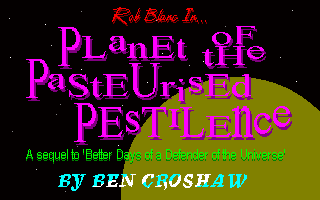
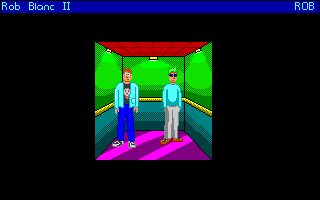
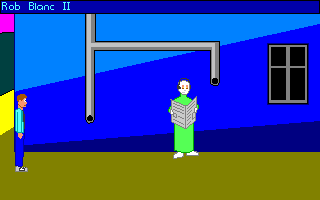
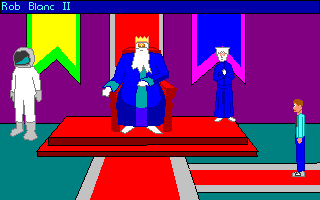
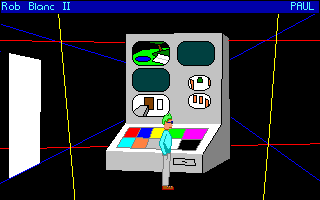



Reviews
There are no reviews yet.